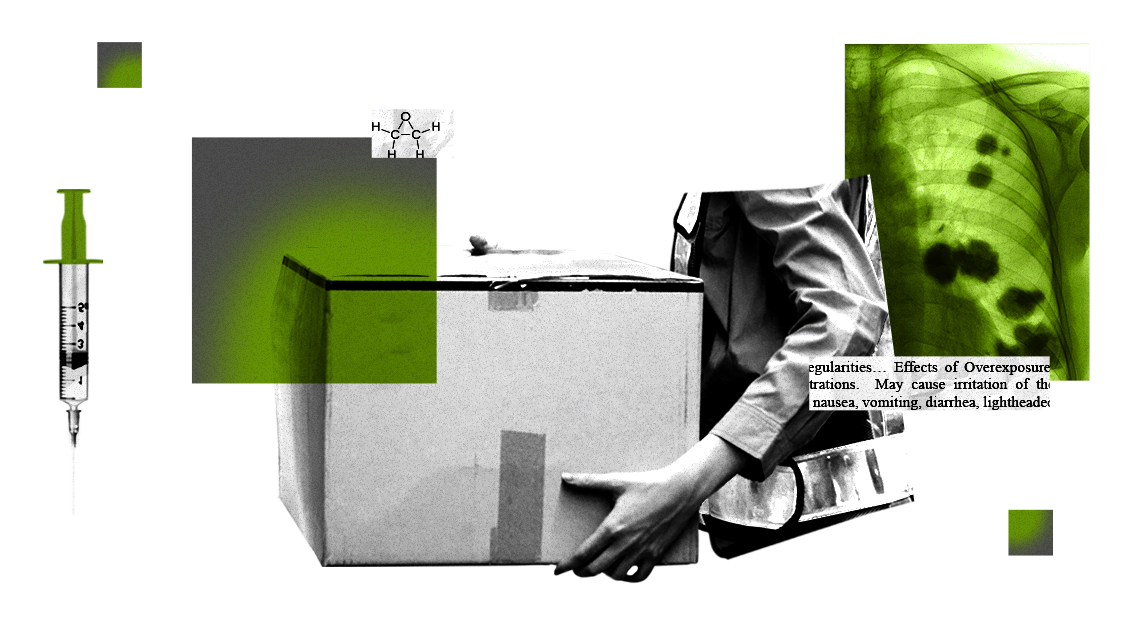Henry Morales woke up in the emergency room in Salinas, Puerto Rico, not knowing where he was. A doctor appeared beside him and gestured toward a dark-haired woman with a worried expression. “Do you know who this is?” he asked. Morales blinked, but didn’t answer. Words seemed to belong to some faraway place, and he was too tired to reach for them. “Who is this?” the doctor repeated. After a few minutes, Henry heard himself respond. “That is my wife,” he said.
The memory of what led him to the hospital returned in blurry snapshots that he continues to piece together more than 20 years later. He’d been working a regular shift at Steri-Tech, a company that sterilizes medical devices, where he’d been an operator technician for five years. His job was to move boxes of medical supplies in and out of the sterilization chambers and to check the small vials of biological material placed in each box as a way to verify that it had all been successfully sterilized. In the normal course of Morales’ work, he typically wore a respirator to protect himself from the toxic gas, ethylene oxide, used to sterilize the medical products.
On the day of his hospitalization, Morales and several coworkers had just removed a pallet of sterilized equipment from the chamber. Once the door to the chamber was closed, Morales and the others took off their gas masks, as was standard. Morales noticed that one vial of biological material was missing. He identified the box he’d overlooked and to be sure that it was sterilized, he opened it.
One memory that has always remained vivid for Morales is what he smelled when he opened the box. “Dulce,” Morales said to describe the scent; it was sweet, unlike anything he’d smelled before.
Steri-Tech uses the gas ethylene oxide — which has a unique ability to penetrate porous surfaces and destroy microorganisms without damaging heat-sensitive materials like heart valves, pacemakers, catheters, and intubation tubes — to fumigate the products it sterilizes. It’s what Morales smelled when he opened the box.
As he arranged the box back on the pallet, Morales began to feel lightheaded, and he stumbled through the rest of his shift.
Once he clocked out, anxious to pick up his wife and go home, he made his way to his car. As soon as he opened the door, his “mind went out.”

A coworker found him convulsing with a seizure in the driver’s seat. His arm was lodged between the seat and the center console, his shoulder dislocated. The coworker quickly called an ambulance, and Morales was rushed to the hospital, where medical staff ran MRI and CT scans and found that a portion of the left side of Henry’s brain had died. He was diagnosed with epilepsy and prescribed the anti-seizure drug Dilantin, which he continues to take four times a day.
When they spoke after the accident, Steri-Tech founder and CEO Jorge Vivoni assured Morales that the plant was safe. According to Morales, Vivoni told him that his condition was the result of congenital epilepsy, not workplace exposure. But during his recovery, Morales decided to read about the effects of inhaling ethylene oxide and recognized that he had experienced all the symptoms of acute exposure: headaches, dizziness, twitchiness, and seizures.
“Henry was never sick,” his wife, Jannette, said. “Everything changed that day. Before that, he was a healthy man.”

At the time of his accident in 2003, the dangers of breathing in ethylene oxide were not fully known, so neither Morales nor any of his peers consistently wore protective gear while working. Ethylene oxide is a volatile organic compound, a synthetic gas that breaks down over the course of a few months after it’s released into the atmosphere. Research since Morales’ incident has shown that ethylene oxide can damage DNA structures — an ability that makes it both an effective sterilizer and a carcinogen. When it is inhaled by humans, it can irritate the respiratory pathways and increase the risk of cancer and negative health effects in unborn children. About 50 percent of the medical equipment in the U.S. and its territories is sterilized this way.
In 2016, the Environmental Protection Agency published its analysis of an epidemiological study of more than 18,000 workers in sterilization facilities that assessed the cancer risk associated with the inhalation of ethylene oxide. The researchers found the chemical to be 30 times more toxic to adults and 60 times more toxic to children than previously known, making it the second most toxic federally regulated air pollutant. The study found links between the exposure to ethylene oxide and multiple types of cancer, including lymphoma and female breast cancer. In response to the EPA’s analysis, some communities in the continental U.S. began to rally against the sterilizers in their backyards. In 2019, a wealthy suburb of Chicago even managed to shut one down.
Ethylene Oxide Facts
But it wasn’t until 2022 that Puerto Ricans learned about the toxic emissions that they worked with and lived near. That summer, the EPA released a modeling analysis finding the island to be an epicenter for ethylene oxide pollution. Four of Puerto Rico’s seven sterilization plants exceed the agency’s cancer risk threshold. The Steri-Tech facility where Morales worked, which has been in operation since 1986, was determined to be the most dangerous sterilizer in the U.S. and its territories. In contrast, the modeling showed that none of California’s 12 sterilizers violated federal standards. The EPA scheduled a community meeting to be held that August in Salinas, at which Jose Font, the agency’s deputy director of its Caribbean division, would answer questions about ethylene oxide and the community’s exposures.
On the night of the meeting, the community center was packed with people who wanted to know why they were only just finding out about the toxic emissions they had lived next to for three decades. Mistrust of local and federal authorities runs deep in the municipality of 25,000, where more than half the population lives in poverty and families bring home on average $20,000 per year. Instead of apologizing, Font mischaracterized the risks to residents’ long-term health. Referring to the 2016 EPA study, he assured the community members that they could only develop cancer from the emissions if exposed for 70 years.

“If you are exposed to a given concentration during 70 years, seven days a week, 24 hours a day, you could develop, or there could be the potential for you to develop, cancer,” Font said. “That is what this means. It is very important to understand that. We are talking about the long term, 70 years, seven days, 24 hours a day exposed to that concentration. These studies are extremely conservative.”
Speaking next, Steri-Tech general manager Andres Vivoni, who is Jorge’s son, said that number should be doubled to 140 years, since the plant only operates for 12 hours a day.
But “that’s not how it works — 70 years and then boom, you get cancer,” Tracey Woodruff, an environmental and reproductive health scientist at the University of California, San Francisco, said. Jennifer Jinot, the former EPA scientist who led the EPA’s ethylene oxide study, explained that an individual’s risk of developing cancer increases the longer they are exposed to the chemical. The EPA’s 70-year benchmark, she said, is the agency’s estimation of the length of an average lifetime, across which exposure — and cancer risk — increases.
Angela Hackel, a spokesperson for the EPA, said that the agency “will not respond to the alleged mischaracterization of risk” and that, “in general, EPA agrees with how risk was communicated at the Salinas meeting.” Steri-Tech did not respond to multiple requests for comment.
“We are dying here,” said long-time resident José Santiago when the community members were given an opportunity to speak at the 2022 meeting. “We are dying. And whoever does not live here, who lives elsewhere, who makes the money, is not impacted, does not worry.” Santiago’s sentiment would prove to be far more accurate than what Font and Vivoni had to say. Subsequent air monitoring by the EPA in the vicinity of Steri-Tech would show that residents were being exposed to levels more than 1,000 times above the agency’s threshold for acceptable risk.
Working conditions at Steri-Tech expose a legacy of negligence by local and federal environmental regulators. Six former plant workers described “inadequate” protective equipment, chronic safety issues that were met with “light” inspections that were “not thorough,” and a work culture that put profits before all else. One employee even found that an important pollution-control device had been turned off at night, confirming rumors he’d heard from workers at the plant. (Several of the workers interviewed for this story asked that their names be withheld for fear of legal retribution from the plant owners or concerns about their friends and family who still work at the facility.) The family that owns and runs the plant are “arrogant and domineering,” said one former worker. “It doesn’t matter to them if their employees get sick. They would implement rules and say, ‘If you want to work, then work, and if you can’t accept things here, then leave.’”

Salinas is a sleepy seaside town that’s best known for its tranquil beaches and traditional seafood restaurants. Multicolored houses line wide streets. Stray dogs meander in packs along the roadside underbrush. There’s a plaza, a public school and a laundromat, a housing development, and a public park. The presence of an industry other than tourism is only apparent in the chemical odors that waft through the town, thick and unpleasant in the hot, bright air.

The high number of medical sterilizers in Puerto Rico is directly tied to the outsize presence of the pharmaceutical and medical-supply industries, which were lured to the island almost half a century ago to take advantage of federal tax incentives aimed at spurring industrialization. Pharmaceutical companies were by far the largest beneficiaries of these policies. According to a 1992 report from the federal General Accounting Office, for every dollar pharmaceuticals paid to a Puerto Rican worker, they saved $2.67 in taxes that they would have otherwise paid to the federal government. This came out to around $70,000 in tax breaks per worker every year.

In addition to the tax incentives, they came eager to capitalize on the relatively cheap labor force and bountiful aquifers, which provided a source of clean water for manufacturing medication. Medical device manufacturers soon cropped up alongside the pharmaceuticals, as advancements in technology called for greater collaboration between the two industries. Sterilization is typically the final step before a medical product goes to market; once the island’s device manufacturers were in business, it only made sense for the sterilizers to follow.
A general lack of environmental enforcement enabled the industry to pollute freely, dumping the toxic byproducts of pharmaceutical production into Puerto Ricans’ air, water, and soil. The legacy of that pollution is palpable in Salinas, where chemical smells hide the scent of the sea.
The employment rate in Salinas hovers around 36 percent, more than 5 percentage points lower than the island average. The range of job opportunities in this region is narrow, and many young people end up leaving for the capital or the mainland to study and find work. Those who remain have few options beyond the restaurants and the pharmaceutical companies.


The safety concerns inside Steri-Tech do not end at the fence line. That’s why some residents are pushing the EPA to conduct a cancer study of the surrounding neighborhood. Esteban G. Morales Neris / Centro de Periodismo Investigativo / Grist

One exception to that trend: A former employee, whom we’ll refer to as Marcos, came to Salinas for its primary industry. He had already spent more than a decade working in the medical technology industry before he joined Steri-Tech as a quality assurance worker. The job entailed overseeing every step of the sterilization process, from the receipt of non-sterile medical products to the approval of processing records after each sterilization cycle is completed. At the time, Marcos knew that ethylene oxide was dangerous, but he also understood it to be a critical component of the medical industry’s supply chain.
Not long after Marcos began working at the plant, he started noticing certain workplace practices that put him ill at ease. Different types of medical equipment require different sterilization “recipes” that specify certain conditions such as temperature and pressure. Failure to use the right specifications risks leaving bacteria on products and infecting patients who come in contact with them down the line. For each batch of sterilized products, plant workers were supposed to fill out charts indicating which recipe they used and submit the paperwork to Marcos for review. On numerous occasions, these handwritten documents confused him, because they differed from the automated records produced by the sterilization equipment. Worryingly, the workers’ records indicated that they had used the correct recipe, while the machine’s data suggested otherwise.
“If there is an issue with a sterilization cycle, you have to sterilize the product again,” Marcos explained. But some types of medical equipment can only withstand one cycle of sterilization without getting damaged. If a batch of this kind of product is incorrectly sterilized, it gets discarded, and “Steri-Tech has to pay for it.”
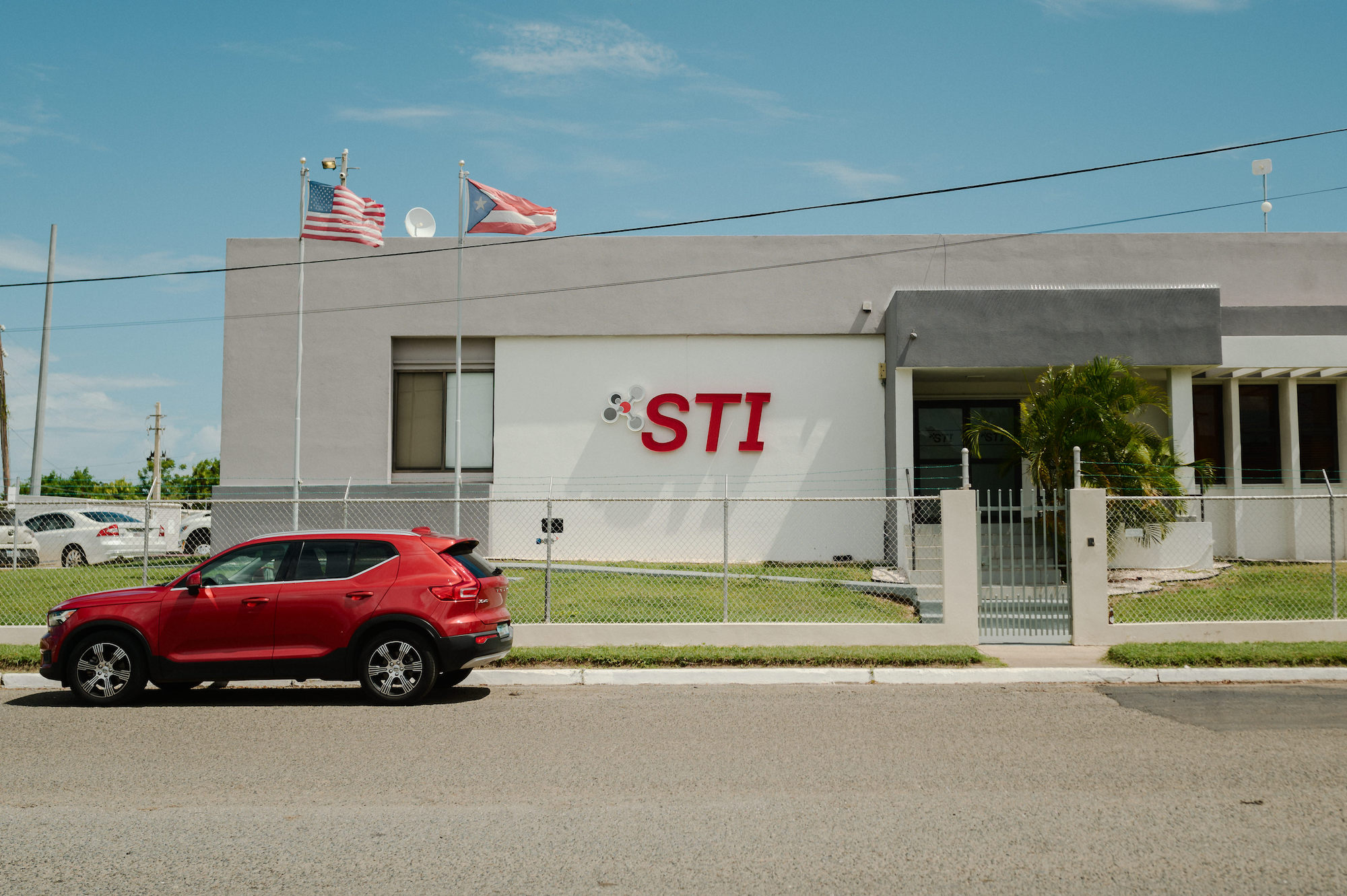
Marcos began hearing rumors that workers on the night shift were turning off the plant’s thermal oxidizer, a device that captures and burns off excess ethylene oxide before it can leak out of the sterilization chambers into the plant or into the air outside. The rumors worried Marcos, so he decided to see for himself whether they were true. One morning, he arrived to work several hours early, and sure enough, the emissions-reduction equipment was switched off and silent. Marcos informed upper management of the practice but does not know whether they ever did anything about it. “I was told not to go there again because that was not my department,” he said. He understood that the propane fuel that powered the thermal oxidizer was the kind of expense that the plant’s owners were known for cutting when they saw fit.
Turning off the thermal oxidizer at night was an open secret at the plant, according to Marcos. Residents of La Margarita, the neighborhood surrounding Steri-Tech, also reported seeing a dark ash-like substance coating their cars, front yards, and sidewalks, which Marcos said was a sign that the thermal oxidizer was being overloaded — an issue that he witnessed firsthand. Operators would run multiple sterilization chambers simultaneously, even though the thermal oxidizer was designed to burn off gases from just one chamber at a time. Unable to handle the excess ethylene oxide-laden air, the oxidizer would release the toxic gas along with fine black particles that eventually landed in the neighborhood.
“It was a constant struggle to do things right,” Marcos said.
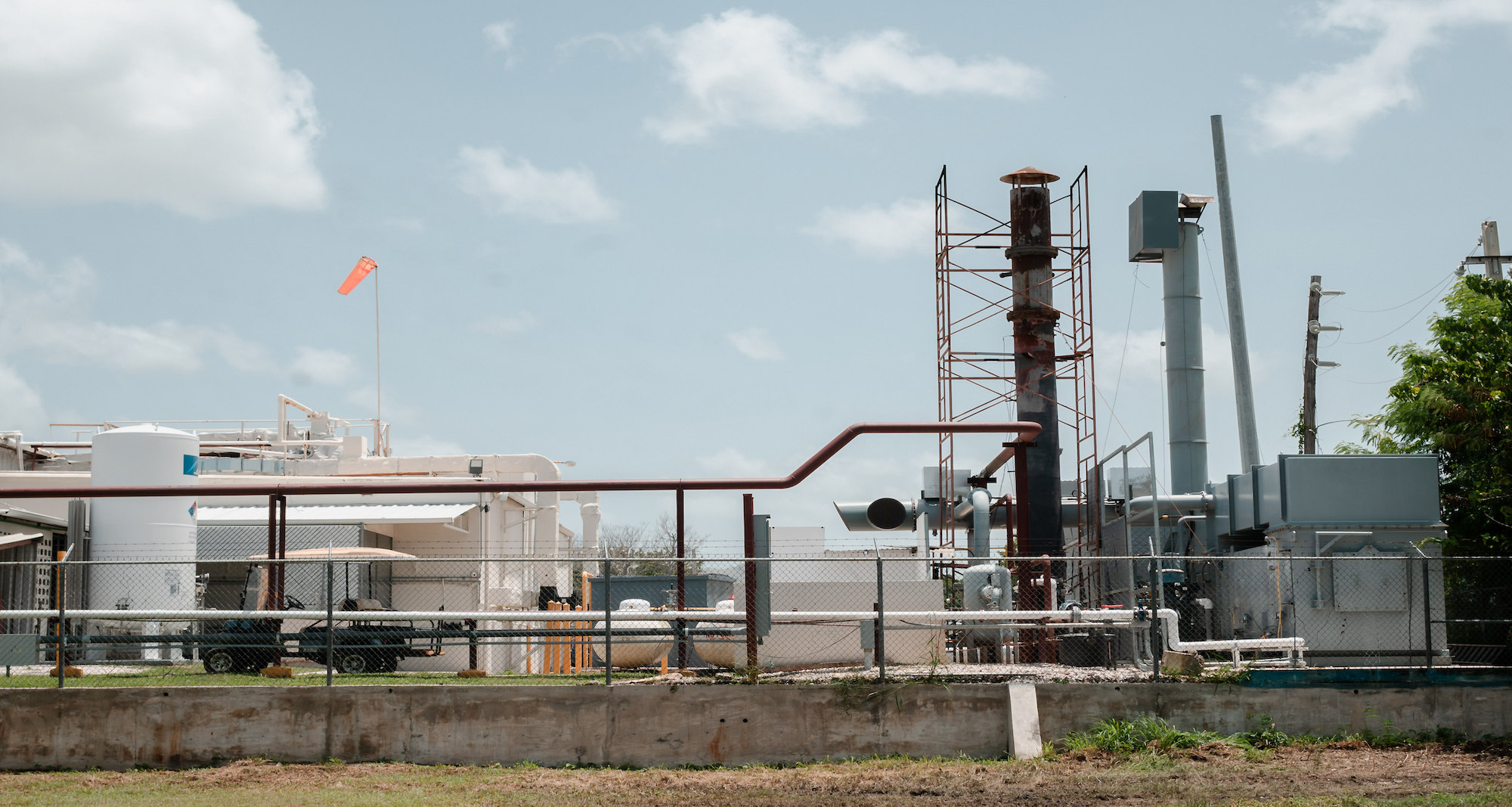
Other former workers described frequently feeling unsafe at the plant. Despite federal regulations that required it, protective equipment was unavailable to operators on the plant floor during most of Marcos’ tenure. If an accident happened — a sterilization chamber opening too soon, an equipment malfunction — workers had no way of protecting themselves from high levels of exposure to ethylene oxide. Marcos recounted an incident in which one of the workers he supervised was near a sterilization chamber when a valve burst, filling the room with ethylene oxide. Afterward, the worker developed asthma. Another former employee described a situation in which a valve was jammed open, causing the plant’s main burner to turn red with heat. As ethylene oxide leaked into the air, the workers were too scared to approach the shutoff valve, because it was right next to the flaming burner.
A former operator at Steri-Tech who worked with Marcos, and whom we are calling Frank, said managers instructed workers to wear face masks, which were connected by hoses to ventilators at the back of the facility, whenever the sterilization chambers were open. But the ventilators made it difficult to breathe, so when workers were unsupervised, Frank said, he and other operators usually avoided the equipment altogether. Another former Steri-Tech operator, who took his job after Frank left, said he was never provided protective equipment even though he requested it. This employee did not have health issues prior to working at the facility, but a few months after he joined, he developed sinus and respiratory problems. “It was a horrible experience,” he said. “It did not pay enough to put myself at that level of risk.”
The conditions at Steri-Tech highlight the dangers of commercial medical sterilization using ethylene oxide, a complex process in which careful consideration must be paid to every step in order to keep workers, nearby residents, and patients safe in the long run. Steri-Tech is just one of nearly a hundred facilities around the country that fumigate medical products using ethylene oxide. While the workplace practices within the Salinas plant cannot be extrapolated to these operations, they may help to explain the substantial levels of ethylene oxide that officials have observed near some of them and underscore the importance of strong enforcement, particularly in places like Salinas where regulators have been historically absent.
Eventually, the true danger of these sloppy practices came to light when the products failed a sterility test conducted by Medtronic, one of Steri-Tech’s clients, raising concern about the possibility of live bacteria on a batch of supposedly sterile products. The incident was just one of many that convinced Marcos to leave for good. “Above all, it was money, not quality,” he said. “Above all, it was money, not people.”

In August 2022, EPA officials set up six air monitors in the vicinity of the Steri-Tech plant to measure the precise levels of ethylene oxide being emitted. The closest was located at one of the dozens of houses across the street. The monitors collected samples for one week. In its subsequent report, the agency noted that the predominant wind direction in the area originates in the east, meaning the plant’s pollution blows directly into La Margarita. That, coupled with Steri-Tech’s high emissions, were driving ethylene oxide exposures far above federal safety standards.
The EPA considers an acceptable cancer risk from air pollution to be below 1 in 10,000. That is, if 10,000 people are exposed to a concentration of a pollutant over the course of a lifetime, one person would be expected to develop cancer from the exposure. Over the one-week measurement period in Salinas, the monitor at the house across the street from the plant recorded, on average, 40 micrograms of ethylene oxide per cubic meter of air, which translates to a cancer risk of 1 in 8. That’s more than 1,000 times higher than the EPA’s acceptable risk threshold. The other five sampling locations also registered concentrations of ethylene oxide that breach federal standards.
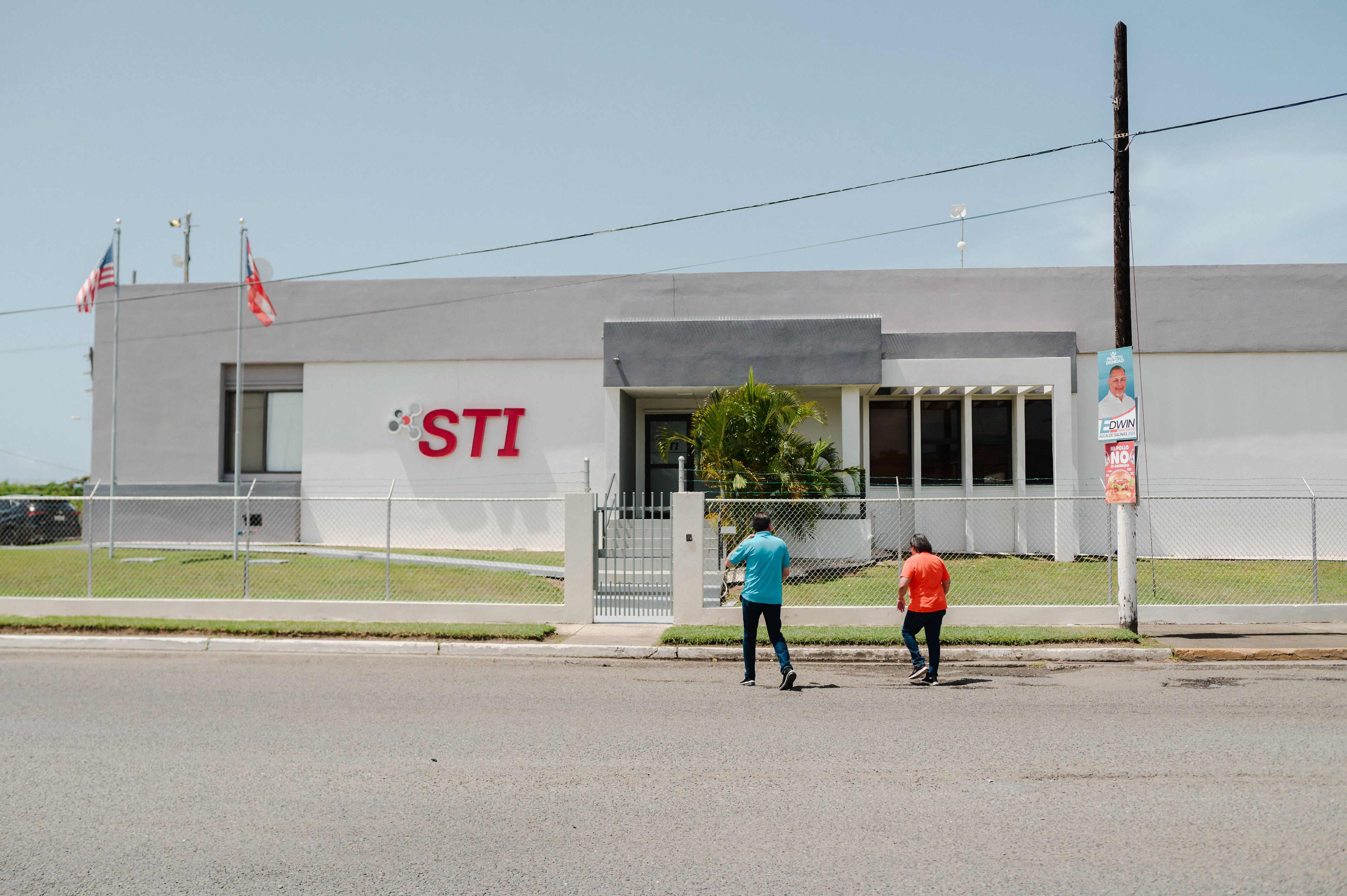
Last September, following the EPA’s monitoring study, Steri-Tech replaced the thermal oxidizer with a new piece of equipment — a catalytic recuperative oxidizer — designed to reduce its ethylene oxide emissions. Since then, residents of La Margarita have reported hearing booms emanating from the facility, so loud that they could be heard more than a mile away. After finding that Steri-Tech could not prove that its new emissions-reduction equipment was functioning properly, the EPA issued a notice of violation and fined the company $200,000. Steri-Tech then sued the EPA, alleging that the agency did not have sufficient evidence to back up its finding. In an email, Angela Hackel, the EPA spokesperson, said she could not comment on the lawsuit, noting that EPA enforcement officers are currently engaged in “confidential enforcement discussions” with the company. The agency finalized new rules earlier this year that will require all medical sterilizers to continuously monitor the level of pollution coming out of their industrial chimneys. Without strong oversight of Steri-Tech, residents of La Margarita may not benefit from those provisions.
While it is impossible to draw a direct line between a source of toxic emissions and deaths from cancer, the presence of sickness is everywhere in La Margarita, where homes of the deceased lie empty, their front lawns overgrown.
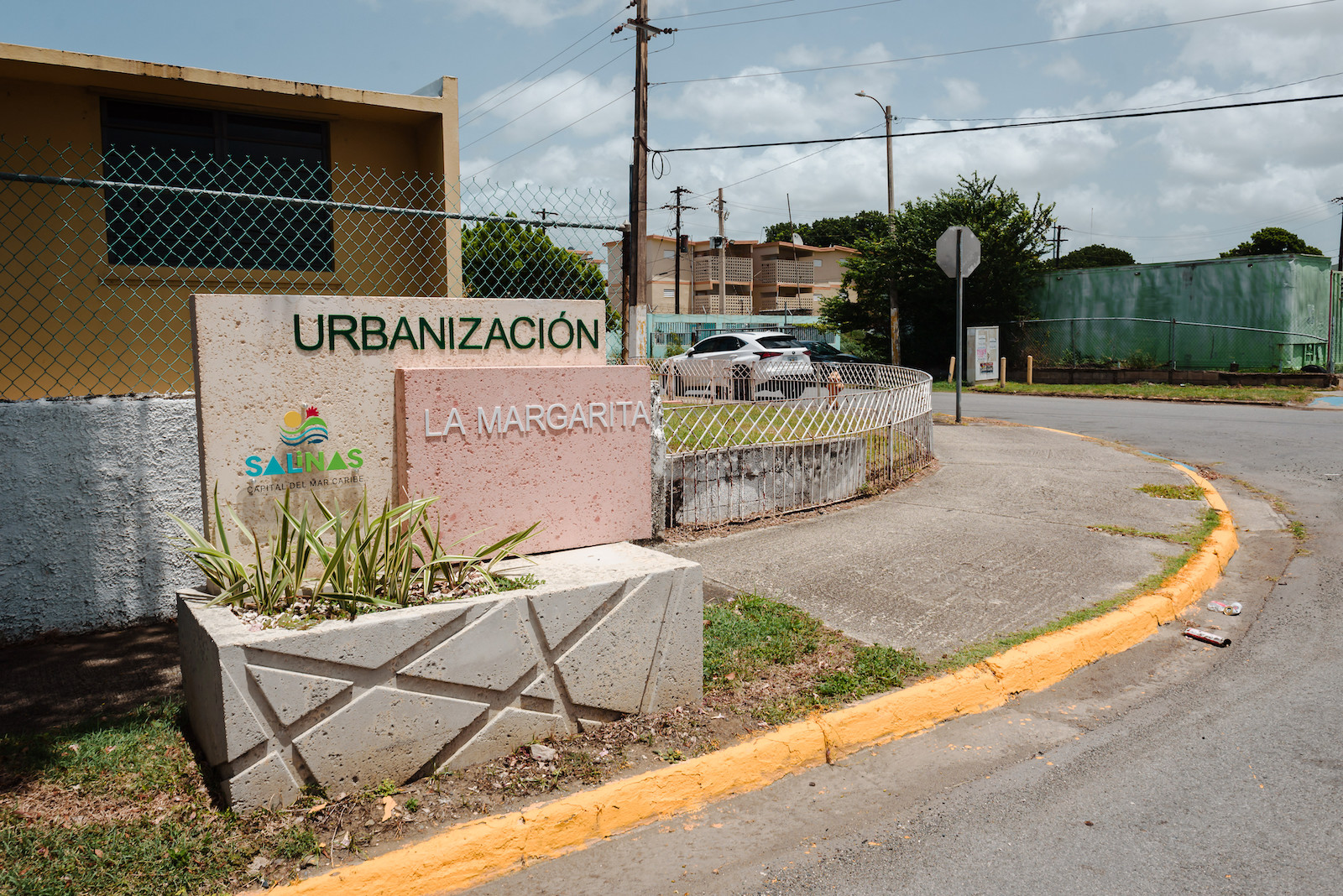
The EPA is the primary federal agency with jurisdiction to enforce environmental laws in Puerto Rico, but its presence on the island has long been minimal. Puerto Rico has its own regulatory agencies tasked with ensuring environmental compliance, but in recent decades, these bodies have hardly played a role in curbing pollution. The Environmental Quality Board, once tasked with the regulation of industrial air emissions, was consolidated into the Department of Natural and Environmental Resources in 2018. Despite the many documented cases of pollution from medical-supply companies in Puerto Rico, the consequences for polluters are limited. Inspections are few and far between. Penalties are paltry. And so the pollution continues.
Compared to the frequency of EPA inspections and enforcement actions on the mainland, Puerto Rico scored among the lowest in the U.S. and its territories. Its roughly 250 industrial facilities that emit air pollutants have been inspected a mere 1,300 times since 2014 — a rate that ranks it 46th in the nation for inspection frequency. Similarly, it ranks 48th in an assessment of the number of actions taken against air polluters.
Between 2011 and 2022, three of the seven sterilizers in Puerto Rico were inspected just once, and two were never inspected at all. Because of its high reported emissions, Steri-Tech was one of the more scrutinized facilities. In an email, Hackel, the EPA spokesperson, told Grist that regulators had inspected Steri-Tech three times over the past five years.
Veteran environmental advocate Victor Alvarado has long been preoccupied with the possible adverse health effects of Steri-Tech’s emissions on the neighboring community — effects that environmental regulators are not required to study in an official capacity. He gave the example of the power plant a few miles down the coast in Guayama, which releases thousands of pounds of toxic heavy metals and other pollutants every year. Its effect on the town’s residents is ongoing, one reason why Alvarado and other Salinas residents have pushed the EPA to conduct a cancer study of La Margarita. “If we leave it to the EPA, if we don’t push them to do a health study, it won’t happen,” Alvarado said. As of this month, the study had still not begun, said researchers at the Ponce School for Health Sciences, which the EPA commissioned to carry out the study.
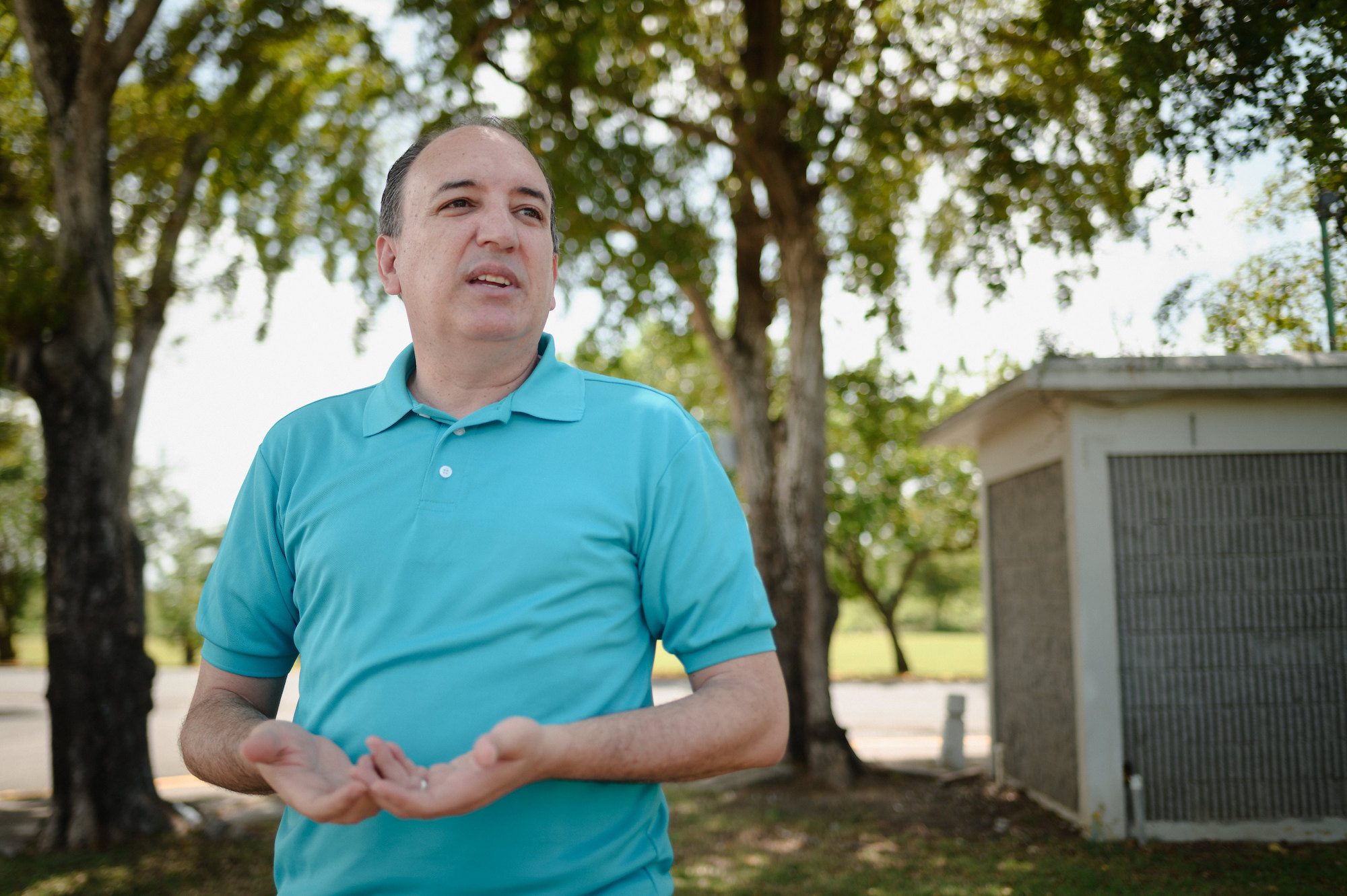
Last year, the agency announced long-awaited rules that require the nation’s roughly 90 sterilization facilities to install equipment that captures ethylene oxide. These controls — called Permanent Total Enclosures, or PTEs — which functionally seal off the facility and are meant to prevent ethylene oxide from entering the atmosphere, have rarely been used on large facilities. Several engineering experts questioned the efficacy of PTEs in sterilization facilities, which are warehouse-like structures with multiple entry points and exits.
“EPA has not one shred of engineering analysis to show it will work,” said Ron Sahu, a mechanical engineer who has worked as a court-approved technical expert in litigation against the sterilization industry and has submitted reports to the EPA on the efficacy of PTEs on behalf of environmental groups. “It is a faith-based, hopeful suggestion, and we’ll see how it works.”
The sterilization industry has also warned the EPA that strict compliance with the rule is not feasible. In instances where companies have installed the technology, it has failed to reduce ethylene oxide emissions to safe levels. In Southern California, contrary to the EPA’s earlier modeling, Parter Medical Products was forced to shut down by local regulators in 2022 after an air quality monitor near the facility detected levels of ethylene oxide more than 4,000 times above the EPA’s safe limit. After installing a PTE, emissions decreased, but the company still exceeded public health thresholds. The emissions from the facility currently put the cancer risk for residents nearby at 378 in 10,000 — 378 times above the EPA’s threshold.
Earlier this summer, environmental and community organizations as well as industry groups sued the EPA for its new rules, the former arguing that they are not sufficiently protective of public health, and the latter claiming they are prohibitively expensive to implement. That litigation, which is still in its initial stages, indicates that the fight over the regulation of medical sterilizers is far from over.
As with all industrial facilities, the safety concerns inside Steri-Tech do not end at the fence line. Joel Ramos Rodriguez lives in his childhood home near the plant, staying on even after losing both of his parents to cancer. For as long as he can remember, the 56-year-old has suffered from hyperthyroidism and neurological problems, the source of which his doctors have never been able to place. Rodriguez said the plant’s presence is most bothersome at night, when a sweet odor fills the air and loud noises emanate from its interior, keeping him awake.

More than 20 years after the accident that upended his life, Henry Morales said that whether or not the EPA passes stronger regulations the damage is already done for generations of Steri-Tech employees. Of his old friends and colleagues from Steri-Tech, he says he is the “sole survivor,” the rest having died from cancer and other health complications years ago. As for his own health, his neurological problems have never subsided, and he still suffers from the aftermath of a stroke that occurred a decade after the accident.
“They threw me out,” he said of the company, which declined to ever provide worker’s compensation, or even to check on him afterward. “That was it.”
Credits
These stories were reported and written by Lylla Younes and Naveena Sadasivam of Grist and Joaquín A. Rosado Lebrón of the Centro de Periodismo Investigativo. Original photography for this project was done by Esteban Morales, and drone photography by Héctor A. Suárez de Jesús.
This project was edited by John Thomason, Matthew McKnight, Víctor Rodríguez Velázquez, Wilma Maldonado and Noel Algarín. Katherine Bagley and Carla Minet provided additional editing and guidance. Jaime Buerger managed production. Mia Torres, Teresa Chin, Gabriela Carrasquillo, and Vanessa Colón Almenas handled web design and art direction. Jesse Nichols and Amelia Bates assisted with photo direction. Clayton Aldern and Gabriela Carrasquillo contributed data work and visualization. Angely Mercado did fact-checking. Noel Algarín, Michelle Kantrow and Laura Candelas handled translation. Jaime Buerger and Kate Yoder copy edited the project. Grist’s John Thomason and Rachel Glickhouse and CPI’s Víctor Rodríguez Velázquez and Noel Algarín coordinated the partnership. Megan Merrigan, Justin Ray, and Mignon Khargie of Grist, and Cristina del Mar Quiles and Brandon Cruz of CPI, handled promotion.
Special thanks to the Fund for Investigative Journalism, which supported the project.


